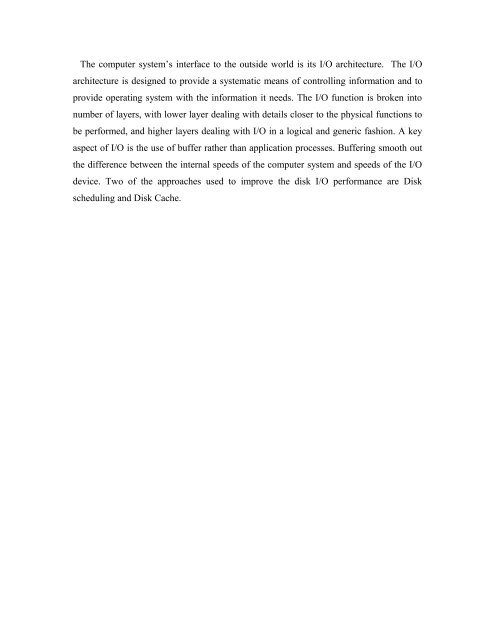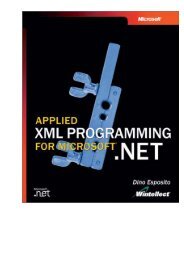I/O Devices and disk scheduling - Csbdu.in
I/O Devices and disk scheduling - Csbdu.in
I/O Devices and disk scheduling - Csbdu.in
You also want an ePaper? Increase the reach of your titles
YUMPU automatically turns print PDFs into web optimized ePapers that Google loves.
The computer system’s <strong>in</strong>terface to the outside world is its I/O architecture. The I/O<br />
architecture is designed to provide a systematic means of controll<strong>in</strong>g <strong>in</strong>formation <strong>and</strong> to<br />
provide operat<strong>in</strong>g system with the <strong>in</strong>formation it needs. The I/O function is broken <strong>in</strong>to<br />
number of layers, with lower layer deal<strong>in</strong>g with details closer to the physical functions to<br />
be performed, <strong>and</strong> higher layers deal<strong>in</strong>g with I/O <strong>in</strong> a logical <strong>and</strong> generic fashion. A key<br />
aspect of I/O is the use of buffer rather than application processes. Buffer<strong>in</strong>g smooth out<br />
the difference between the <strong>in</strong>ternal speeds of the computer system <strong>and</strong> speeds of the I/O<br />
device. Two of the approaches used to improve the <strong>disk</strong> I/O performance are Disk<br />
<strong>schedul<strong>in</strong>g</strong> <strong>and</strong> Disk Cache.















